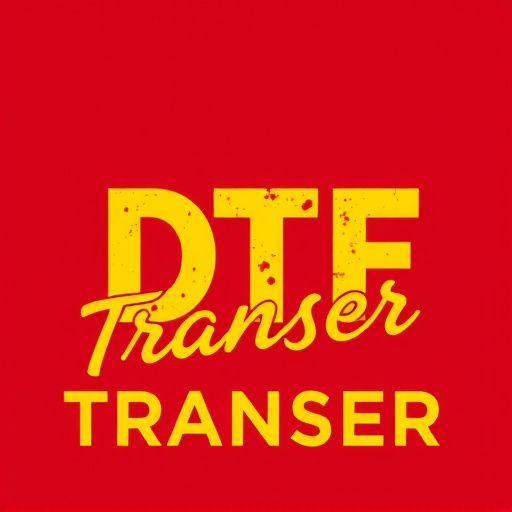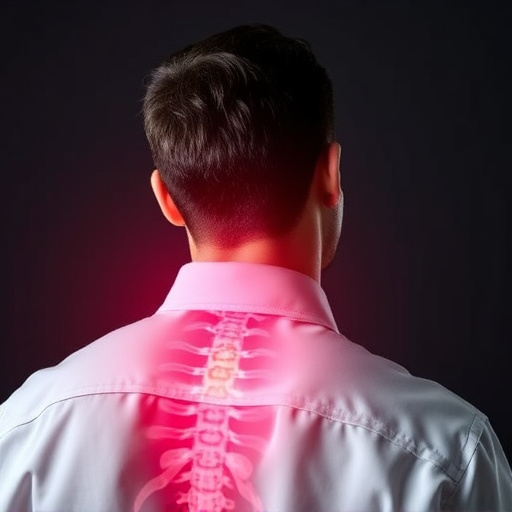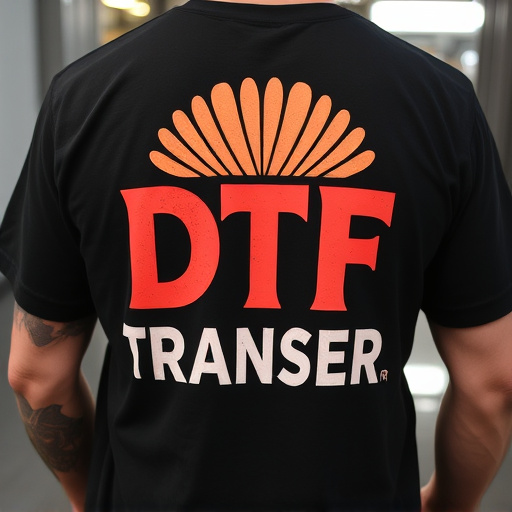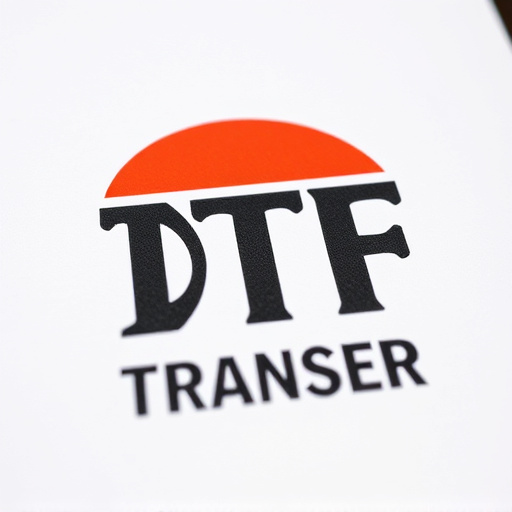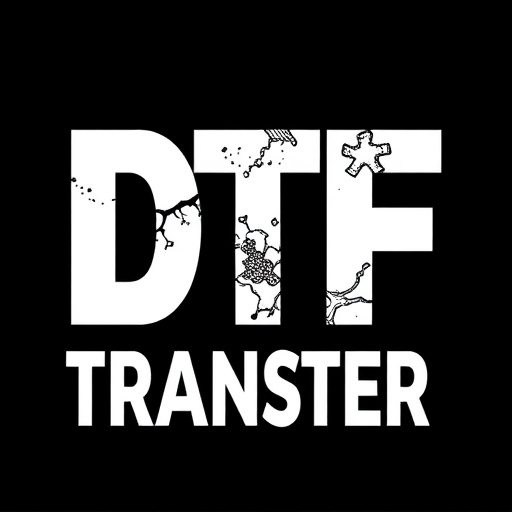Direct-to-Film (DTF) transfers are an advanced printing technique reproducing high-quality images directly onto diverse surfaces like glass, metal, plastic, and fabric. This method offers versatile efficiency by eliminating intermediate materials, combining ink carriers and specialized substrates for precise, fast transfer with reduced waste. DTF prints feature exceptional detail and color accuracy, ideal for decorative or functional uses. Special materials enhance ink adhesion and retention, ensuring precision and durability in applications like sign-making, packaging design, and art reproduction. The quality of DTF prints relies on proper surface preparation and specialized adhesives, guaranteeing longevity. Key benefits include vibrant colors, crisp details, and long-lasting durability, making DTF transfers popular for event banners, murals, fashion textiles, and small-batch production. Choosing the right material involves balancing ink adhesion, retention, vibrancy, environmental conditions, and cost-effectiveness. The future of DTF transfer technology looks promising with advancements in materials and techniques, improving print quality, color accuracy, and durability across industries.
“Direct-to-film (DTF) transfers are revolutionizing printing across various industries. This innovative process allows for high-quality, long-lasting prints directly onto materials like fabric, wood, and plastic. The secret lies in special materials that act as ink receptives, ensuring superior adhesion for vibrant, durable results.
This article explores the science behind DTF transfers, from the role of specialized materials to the diverse applications transforming sectors. We’ll delve into the benefits, challenges, and future trends, providing a comprehensive guide to this game-changing technology.”
- Understanding Direct-to-Film (DTF) Transfers: A Brief Overview
- The Role of Special Materials in DTF Printing Process
- How Ink Adheres to These Materials for Longevity
- Benefits and Applications of DTF Prints in Various Industries
- Challenges and Considerations in Choosing the Right Material
- Future Prospects: Evolving Trends in DTF Transfer Technology
Understanding Direct-to-Film (DTF) Transfers: A Brief Overview

Direct-to-Film (DTF) transfers are a cutting-edge printing technique revolutionizing the way we reproduce images and graphics directly onto various surfaces, from glass and metal to plastic and fabric. This innovative process eliminates the need for intermediate materials, such as film or plates, making it an efficient and versatile option for a wide range of applications. DTF technology enables high-quality prints with exceptional detail and color accuracy, ensuring that final products meet the highest standards.
DTF printing involves a specialized material that acts as both the ink carrier and the substrate, allowing for direct application of ink. This unique material is designed to hold the ink in place during the printing process, ensuring precise and even transfer. The DTF approach offers numerous advantages, including faster production times, reduced waste, and the ability to print on unconventional shapes and surfaces. Whether for decorative purposes or functional applications, DTF transfers are a game-changer, providing businesses and individuals with a powerful tool for creating stunning, long-lasting prints on demand.
The Role of Special Materials in DTF Printing Process
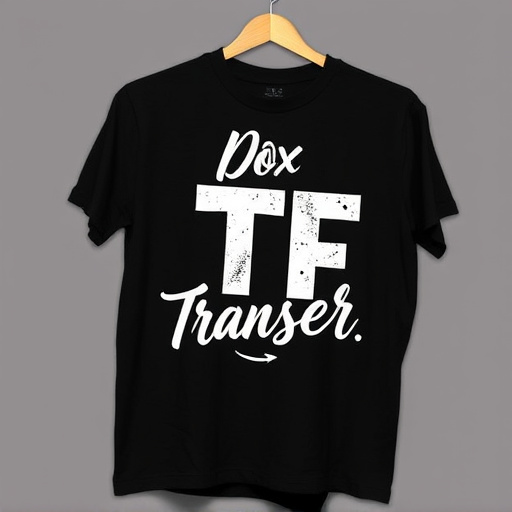
Special materials play a pivotal role in the Direct-to-Film (DTF) printing process, revolutionizing the way we produce high-quality prints. These innovative substances are designed to hold ink effectively during the transfer process, ensuring precise and vibrant DTF prints. By offering superior ink adhesion and retention, they enable printers to achieve stunning detail and color accuracy on a variety of surfaces.
In the DTF Transfer process, these special materials act as a crucial intermediary between the printing press and the final medium. They are typically coated or treated to create a surface that attracts and retains ink particles, facilitating a seamless transfer from film to substrate. This technology is especially beneficial for demanding applications where precision and durability are paramount, such as in sign-making, packaging design, and even fine art reproduction.
How Ink Adheres to These Materials for Longevity

The adherence of ink to special materials used for direct-to-film (DTF) transfers is a key factor in ensuring the longevity and quality of DTF prints. These materials are specifically designed with unique surfaces that facilitate a strong bond with ink, allowing for crisp, vibrant prints that withstand the test of time. The process begins with the material’s surface preparation, where it’s treated to create microscopic textures or patterns that increase the contact area between the ink and the substrate.
Once the surface is ready, the ink is carefully applied, taking advantage of capillary action and surface tension to permeate these micro-structures. This results in a deep penetration of the ink into the material, creating a durable bond. Additionally, many DTF materials are coated with special adhesives or primers that further enhance ink adhesion, preventing smudging, fading, or peeling over extended periods. The combination of these factors ensures that DTF transfers not only look stunning initially but also maintain their visual appeal and integrity for years to come.
Benefits and Applications of DTF Prints in Various Industries
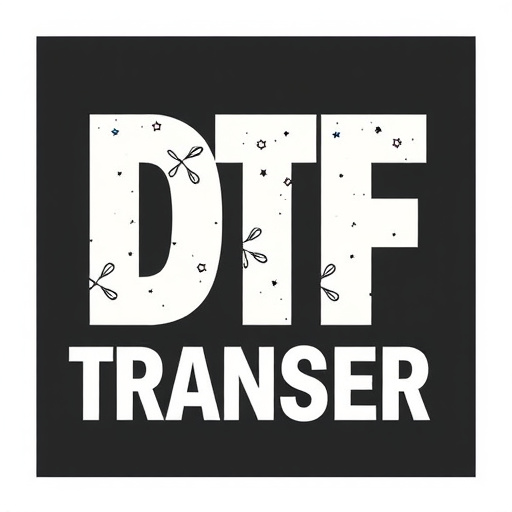
Direct-to-film (DTF) transfers offer a range of benefits across various industries. One of its key advantages is the ability to print high-quality, durable images directly onto a variety of surfaces, from vinyl and fabric to wood and metal. This makes DTF ideal for signmaking, advertising, textiles, and even art restoration projects. With advanced ink technology, DTF prints deliver vibrant colors, crisp details, and long-lasting durability, ensuring that the final product remains visually appealing for extended periods.
The versatility of DTF printing allows for a multitude of applications. In the event planning industry, it enables the rapid production of custom banners and posters. Graphic designers can create captivating murals and wall art with ease. Additionally, DTF technology is increasingly used in the fashion sector to produce unique textiles and clothing designs. Its efficiency and precision make DTF prints a preferred choice for small-batch production and one-off projects, offering businesses and creatives a flexible and cost-effective solution without compromising on quality.
Challenges and Considerations in Choosing the Right Material

Choosing the right material for direct-to-film (DTF) transfers is a delicate balance. One of the primary challenges lies in ensuring the ink adheres well to the film, while maintaining its quality and vibrancy during the transfer process. The surface roughness and composition of the material play crucial roles in achieving crisp, clear DTF prints. Additionally, the material must be compatible with various ink types, as different inks react differently to surfaces, leading to potential smudging or fading if not properly matched.
Considerations also extend to environmental factors, such as temperature and humidity, which can impact both the material and the ink’s performance during printing. Durability is another critical aspect; the material should withstand handling and transportation without compromising the integrity of the DTF transfer. Moreover, cost-effectiveness is essential for commercial applications, balancing quality with affordability to ensure a competitive edge in DTF printing services.
Future Prospects: Evolving Trends in DTF Transfer Technology
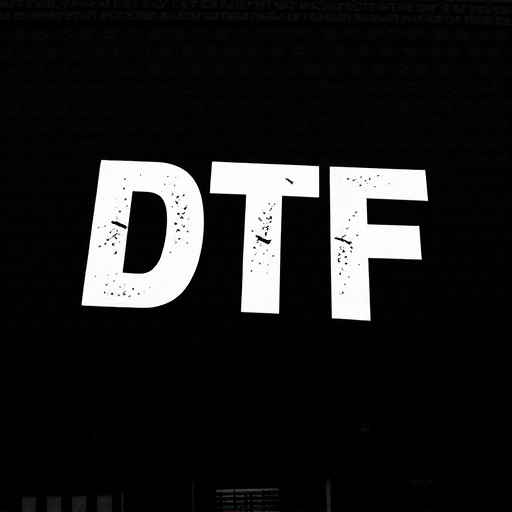
The future of direct-to-film (DTF) transfer technology looks promising as innovations continue to drive its evolution. One prominent trend is the development of advanced materials capable of holding ink more efficiently, enabling higher print quality and speed. This shift towards specialized, high-performance materials is crucial in meeting the growing demand for DTF prints in various industries, from packaging to signage.
Additionally, researchers are exploring new methods to enhance color accuracy and durability of DTF prints. With advancements in ink formulations and application techniques, we can expect even more vibrant and long-lasting DTF transfers. These evolving trends in DTF transfer technology not only promise to improve the overall printing experience but also open up new possibilities for creative expression and customization across different sectors.

